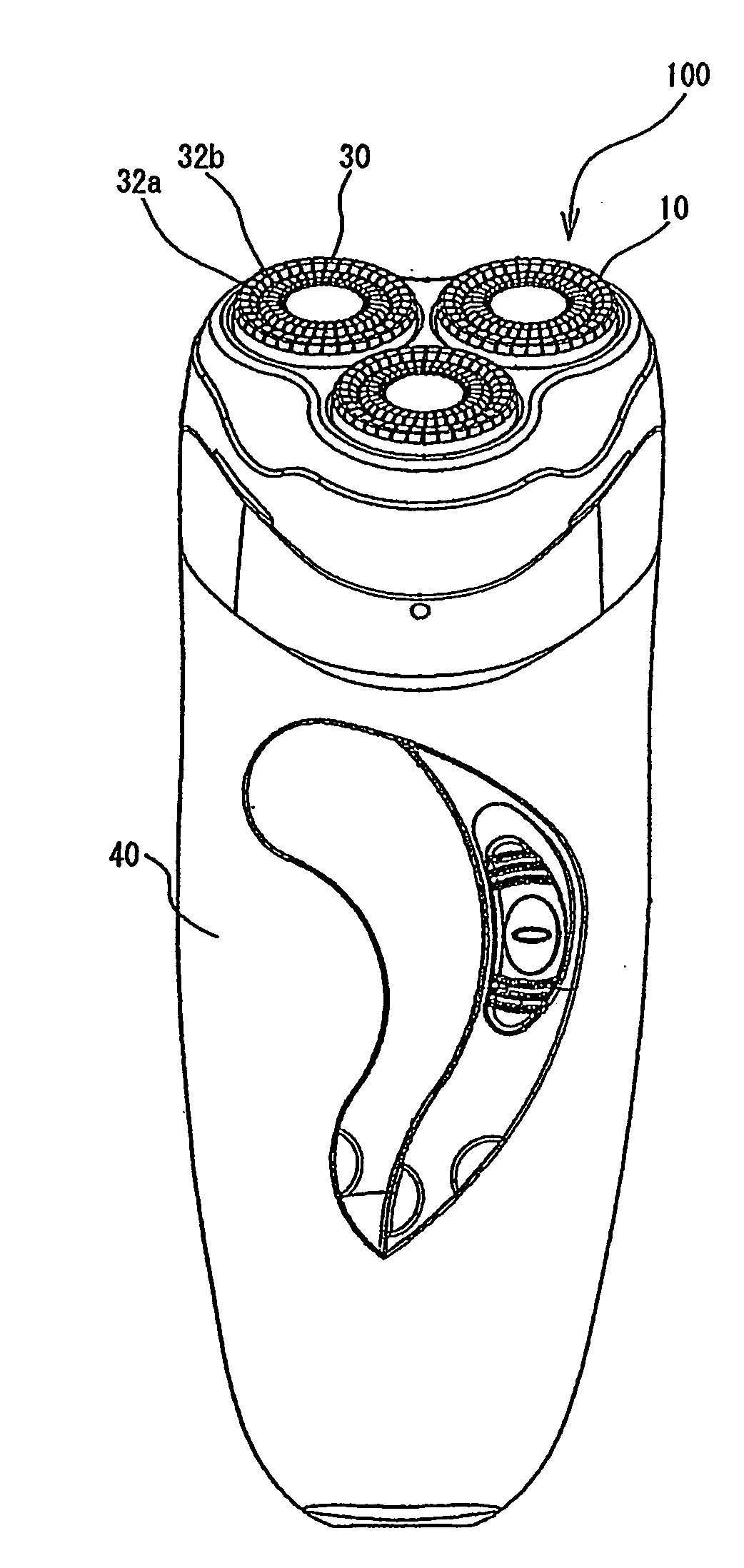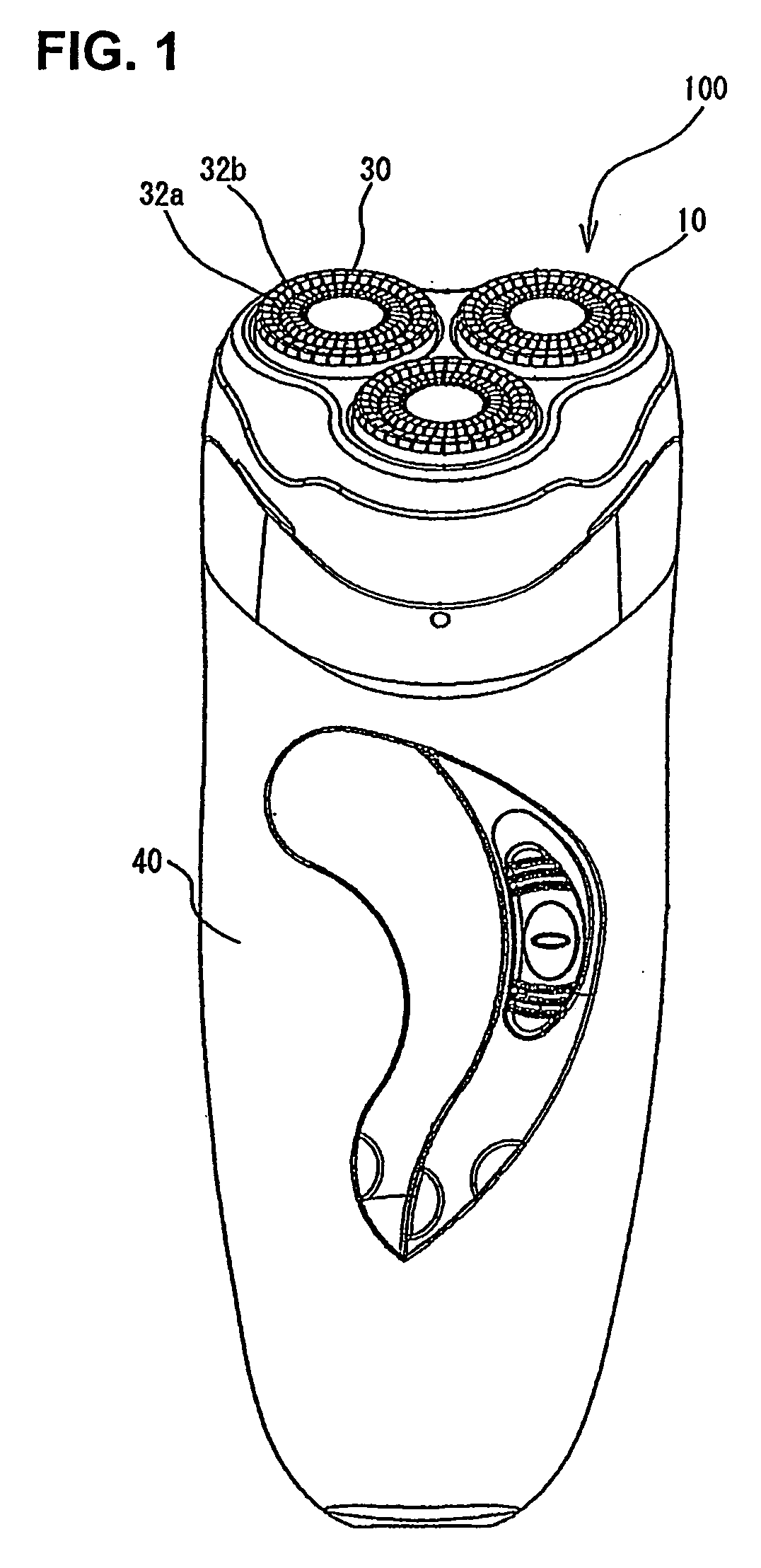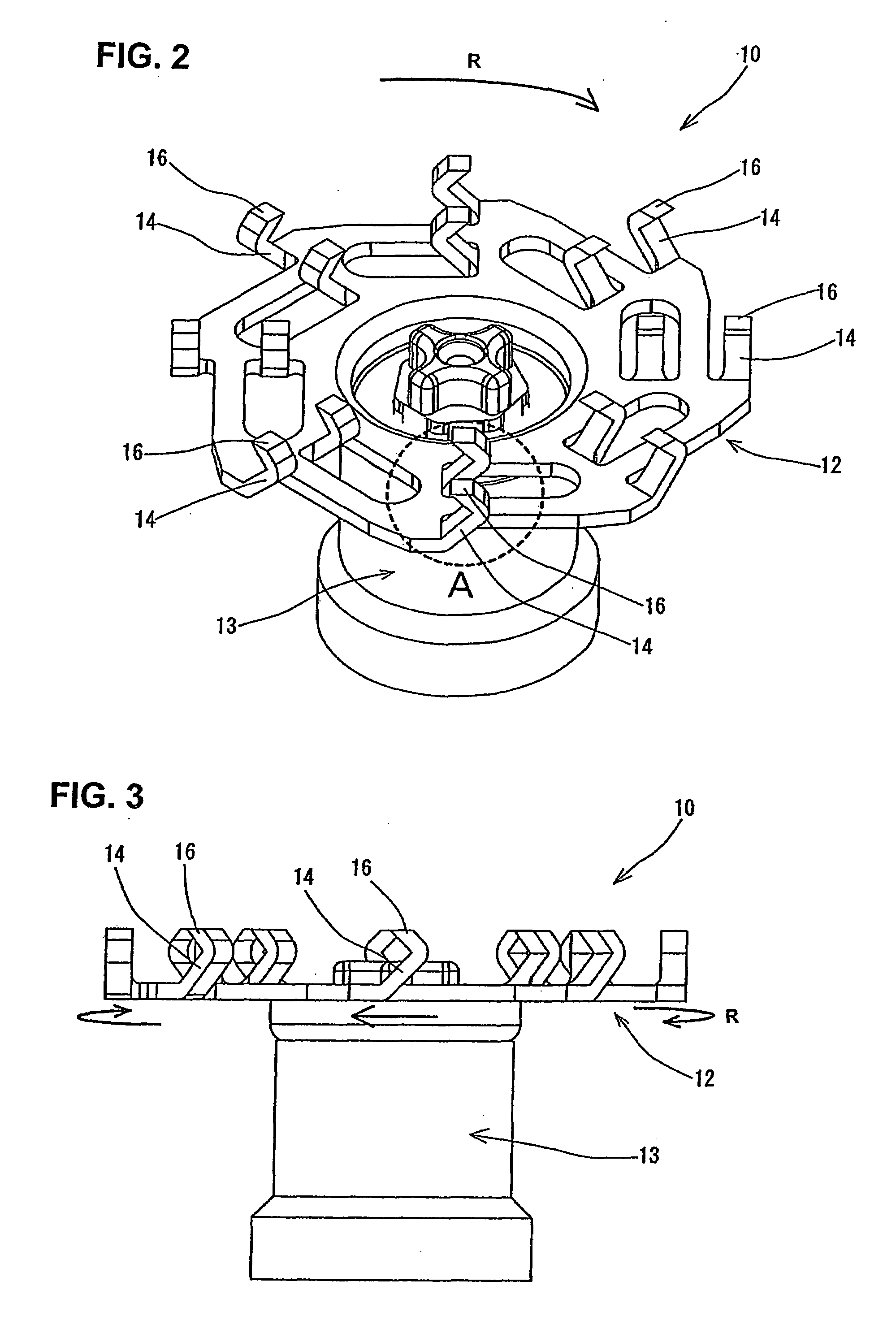Inner cutter for a rotary shaver and a rotary shaver using the same
a technology of rotary shaver and inner cutter, which is applied in the direction of metal working apparatus, etc., can solve the problems of difficult to realize anti-wear properties, difficult to thin the material, and increase the manufacturing cost of inner cutters, so as to achieve good cutting sharpness and normal wear. , the effect of long-term maintenan
- Summary
- Abstract
- Description
- Claims
- Application Information
AI Technical Summary
Benefits of technology
Problems solved by technology
Method used
Image
Examples
Embodiment Construction
[0042]Embodiments of the present invention will be described with reference to the accompanying drawings. FIG. 1 shows a rotary shaver according to the embodiments of the present invention. FIG. 2 is a perspective view of the inner cutter for a rotary shaver of one embodiment. FIG. 3 is a front view thereof. FIG. 4 is an enlarged explanatory diagram of Portion A in FIG. 2.
[0043]As seen from FIG. 1, the rotary shaver 100 is an electrically chargeable type shaver that includes a chargeable battery which is a power supply (power source) and a motor which is a drive unit housed inside the frame body 40 of the shaver (and thus neither the chargeable battery or the motor are shown in FIG. 1). At the top of the shaver frame body 40, three inner cutters 10 (see FIGS. 2 to 4), which are rotationally driven in linkage with the output shaft (not shown) of the motor, and three outer cutters 30, which are for cutting hair in conjunction with the inner cutters 10, are provided such that they, res...
PUM
 Login to View More
Login to View More Abstract
Description
Claims
Application Information
 Login to View More
Login to View More - R&D
- Intellectual Property
- Life Sciences
- Materials
- Tech Scout
- Unparalleled Data Quality
- Higher Quality Content
- 60% Fewer Hallucinations
Browse by: Latest US Patents, China's latest patents, Technical Efficacy Thesaurus, Application Domain, Technology Topic, Popular Technical Reports.
© 2025 PatSnap. All rights reserved.Legal|Privacy policy|Modern Slavery Act Transparency Statement|Sitemap|About US| Contact US: help@patsnap.com



